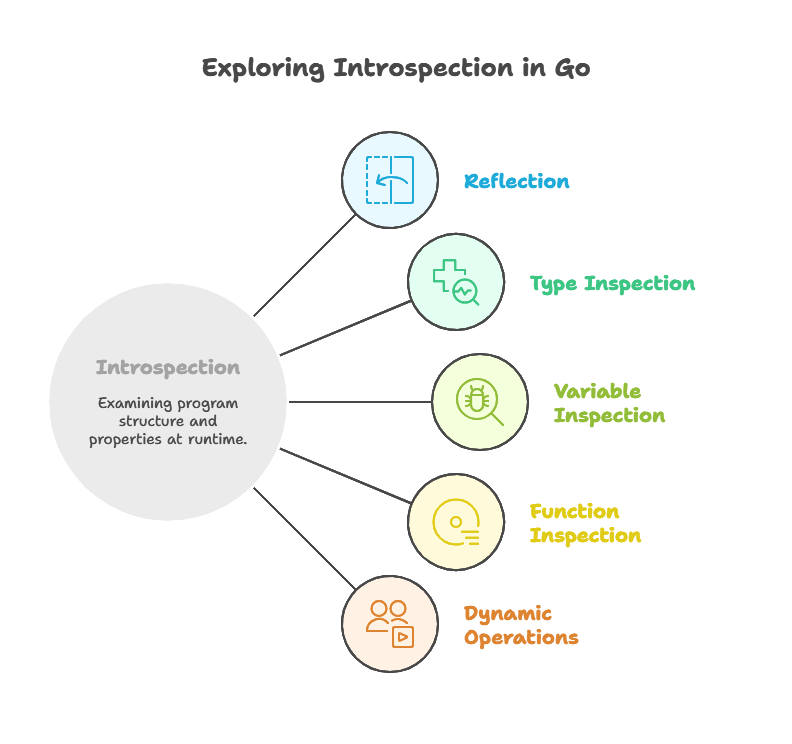Introspection and Type Information
Introspection and type information are powerful features in Go that allow developers to inspect and manipulate types, variables, and functions at runtime. This chapter explores these concepts comprehensively, starting from the basics and progressing to advanced techniques. By the end of this chapter, readers will have a deep understanding of introspection and type information in Go, empowering them to write more dynamic and flexible code.
Understanding Introspection
Basic Concepts
Introspection refers to the ability of a program to examine its own structure and properties at runtime. In Go, introspection is achieved through the use of reflection, which provides a mechanism to inspect types, variables, and functions dynamically.
Reflection in Go
The reflect package in Go provides the tools necessary for introspection. It allows developers to obtain information about types, variables, and functions, and perform operations such as creating new instances, invoking methods, and accessing struct fields dynamically.

Working with Type Information
Obtaining Type Information
In Go, type information can be obtained using the reflect package. The TypeOf function returns the reflection type of a value, which includes information such as its kind, size, and methods.
package main
import (
"fmt"
"reflect"
)
func main() {
var x int = 42
t := reflect.TypeOf(x)
fmt.Println("Type:", t)
}
Inspecting Struct Fields
The reflect package allows developers to inspect the fields of a struct dynamically. By iterating over struct fields, developers can access field names, types, and values at runtime.
package main
import (
"fmt"
"reflect"
)
type Person struct {
Name string
Age int
}
func main() {
p := Person{Name: "Alice", Age: 30}
v := reflect.ValueOf(p)
t := v.Type()
for i := 0; i < t.NumField(); i++ {
field := t.Field(i)
value := v.Field(i)
fmt.Printf("Field: %s, Type: %s, Value: %v\n", field.Name, field.Type, value.Interface())
}
}
Modifying Struct Fields Dynamically
Reflection in Go also allows developers to modify struct fields dynamically. This can be useful in scenarios where the structure of data needs to be altered based on runtime conditions.
package main
import (
"fmt"
"reflect"
)
type Person struct {
Name string
Age int
}
func main() {
p := Person{Name: "Alice", Age: 30}
v := reflect.ValueOf(&p).Elem()
nameField := v.FieldByName("Name")
if nameField.IsValid() && nameField.CanSet() {
nameField.SetString("Bob")
}
fmt.Println("Modified Name:", p.Name)
}
Creating New Instances Dynamically
Reflection allows developers to create new instances of types dynamically. This can be useful when the type of an object needs to be determined at runtime.
package main
import (
"fmt"
"reflect"
)
type Person struct {
Name string
Age int
}
func main() {
pType := reflect.TypeOf(Person{})
pValue := reflect.New(pType).Elem().Interface().(Person)
fmt.Println("New Person:", pValue)
}
Introspection and type information in Go provide developers with powerful tools to write flexible and dynamic code. By leveraging reflection, developers can inspect and manipulate types, variables, and functions at runtime, enabling a wide range of advanced programming techniques. Happy coding !❤️
